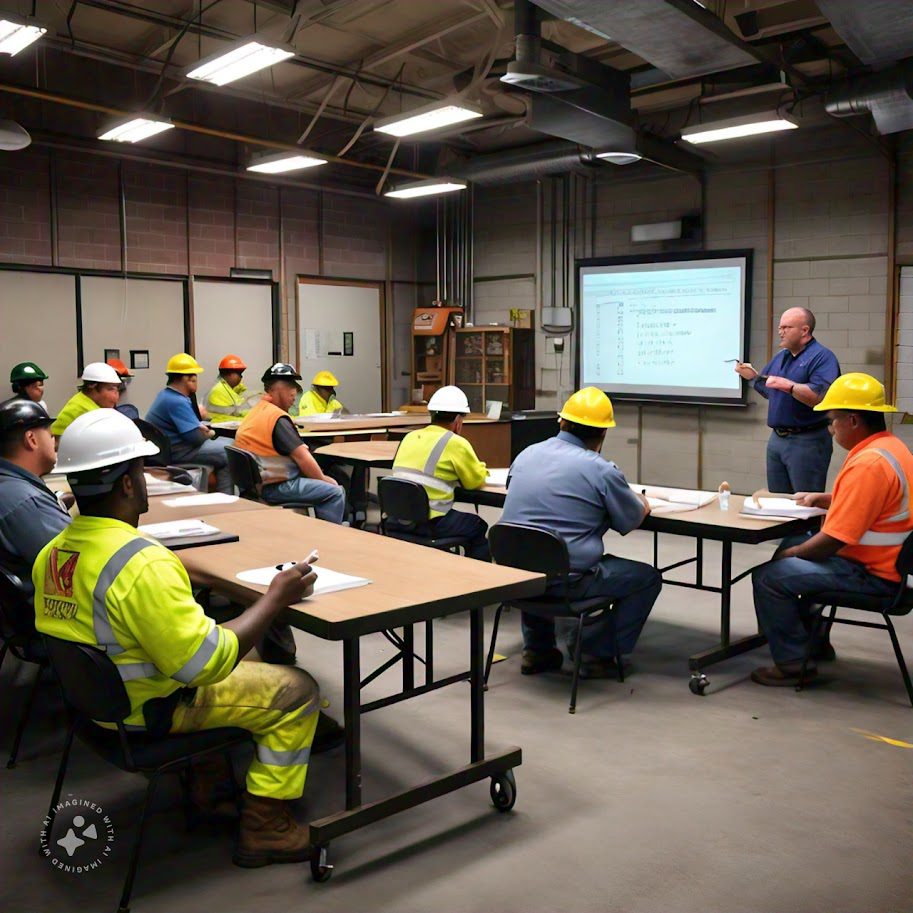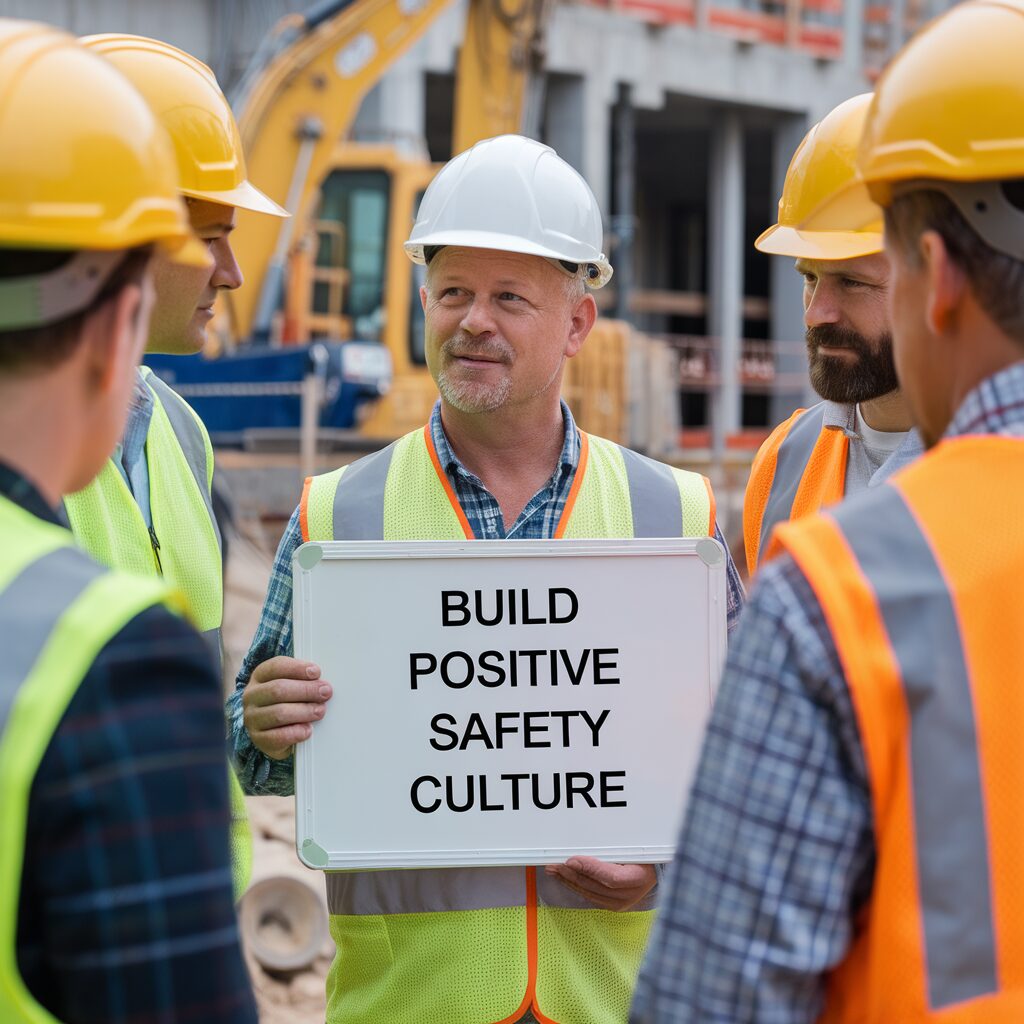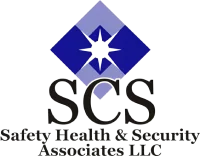Cultivating a Thriving Safety Culture: A Roadmap for Your Company
Safety in the workplace is more than just a set of rules or a compliance checklist. It is a fundamental value, deeply embedded in the way a company operates and how its people think and behave. We call this safety culture. Building or improving a strong safety culture is crucial for the well-being of your employees; furthermore, it enhances the efficiency of your operations and the overall success of your business.
So, how do you move from a place where safety is seen as a burden to one where it is a shared responsibility and a source of pride? It takes conscious effort, commitment, and a strategic approach.

What is Safety Culture?
Safety culture does not just have safety rules, policies, or training programs. It is a deeper, more fundamental aspect of an organization. Safety culture refers to the shared values, beliefs, attitudes, and behaviors related to safety that exist among everyone within an organization, from top leadership to entry-level employees.
What people really believe about safety: Do they see it as a priority or just a burden? Do they believe incidents are preventable? How do people behave regarding safety: Do they follow procedures even when no one is watching? Do they report hazards or near misses? Do they feel comfortable speaking up if something seems unsafe? Consider how the organization operates regarding safety: Does it factor safety into its planning and decision-making? Are you allocating resources for safety? How do you investigate and communicate incidents?
In essence, a strong safety culture is one where:
- Safety is a core value: It is just as important as production, quality, or cost.
- Leadership is visibly committed: Management actively participates in and champions safety efforts.
- Employees are engaged: Workers feel empowered to identify hazards, report issues, and suggest improvements without fear of blame.
- Communication is open: Information about hazards, incidents, and safety performance flows freely throughout the organization.
- Learning is prioritized: Incidents and near misses are seen as opportunities to gain experience and improve systems, rather than just focusing on individual blame.
- Responsibility is shared: Everyone understands that they have a role to play in maintaining a safe workplace.

Conversely, a weak safety culture might have rules on paper, but in practice, they often sacrifice safety for speed or production, reporting is poor, and they lack trust regarding safety matters.
How is Your Company’s Safety Culture?
Cultivating a thriving safety culture within your organization:
1. Leadership Commitment Starts at the Top (and Stays There)
Leadership must drive a strong safety culture. If managers and executives do not visibly prioritize safety, why should anyone else?
- Action: Leaders should regularly participate in safety meetings, conduct safety walkthroughs, discuss safety in company-wide communications, and allocate necessary resources for safety initiatives and training. Their actions must consistently demonstrate that safety is a core business value, not just a box to check.
2. Empower and Engage Your Employees
Your employees are on the front lines. They often know the hazards and potential solutions better than anyone. A top-down approach is not enough; you need buy-in and active participation from everyone.
- Action: Create channels for employees to voice safety concerns and suggestions without fear of reprisal. Establish safety committees with representatives from different departments. Encourage and reward reporting of near misses and hazards – this shows you value proactive identification over reactive incident response. Involve employees in developing safety procedures and risk assessments.
3. Foster Open and Consistent Communication
Communication is the lifeblood of any culture, especially a safety one. Information needs to flow freely – from leadership down, from the front lines up, and across departments.
- Action: Hold regular safety meetings and toolbox talks. Use multiple communication methods (posters, emails, digital screens, company intranet) to reinforce safety messages. Make safety data (like incident rates, near misses reported) transparent and accessible. Ensure employees know who to go to with safety questions or concerns.
4. Provide Comprehensive and Ongoing Training
Training is not a one-off event during onboarding. To maintain a strong safety culture, training must be continuous, relevant, and engaging.
- Action: Provide thorough training on job-specific hazards, emergency procedures, and the correct use of equipment and personal protective equipment (PPE). Offer refresher courses regularly. Train supervisors specifically on their safety responsibilities and how to lead, by example and coach their teams. Consider different learning styles to make training effective.
5. Implement Robust Hazard Identification and Control
A proactive safety culture focuses on preventing incidents before they happen. This requires a systematic approach to identifying potential dangers and implementing controls.
- Action: Establish processes for regular workplace inspections. Encourage employees to report hazards immediately using an easy system. Conduct thorough risk assessments for new tasks, equipment, or processes. Implement a hierarchy of controls (elimination, substitution, engineering controls, administrative controls, PPE) to mitigate identified risks effectively.

6. Establish a Fair and Effective Incident Reporting and Investigation Process
Incidents and near misses are opportunities to learn and improve. The process for handling them should focus on understanding why something happened, rather than immediately assigning blame.
- Action: Make reporting easy and encourage the reporting of all incidents and near misses, no matter how minor. Conduct thorough, root-cause investigations involving relevant personnel. Share the findings and corrective actions broadly across the organization to prevent recurrence. Emphasize that the goal is learning, not punishment (unless willful negligence is involved).
7. Recognize and Reinforce Positive Safety Behavior
Celebrate successes and acknowledge individuals and teams who contribute positively to the safety culture. This reinforces desired behaviors and motivates others.
- Action: Publicly recognize employees who report hazards, participate actively in safety initiatives, or demonstrate exemplary safe work practices. Share success stories of how reporting near misses prevented potential incidents. Recognition does not always need to be monetary; a simple thank you and acknowledgement can go a long way.
8. Integrate Safety into Performance Management
For safety to be truly valued, it needs to be considered alongside other performance metrics like productivity and quality.
- Action: Include safety responsibilities and performance in job descriptions and performance reviews for all employees, especially supervisors and managers. Ensure that production goals do not compromise safety practices.
9. Measure, Evaluate, and Continuously Improve
Safety culture is not static. It requires ongoing attention and refinement. You need ways to measure your progress and identify areas for improvement.
- Action: Track leading indicators (e.g., near misses reported, safety observations completed, training completion rates) in addition to lagging indicators (e.g., incident rates, lost time injuries). Conduct regular safety culture surveys to gauge employee perception. Use audit results and incident data to identify trends and adjust your strategies.
Building a strong safety culture is a journey, not a destination.
It requires consistent effort from everyone in the organization. By focusing on these key pillars – leadership, employee engagement, communication, training, proactive hazard management, fair incident response, recognition, integration, and continuous improvement – you can cultivate a workplace where safety is truly a way of life, protecting your most valuable asset: your people.
Resources: Recommended Practices for Safety and Health Programs. Changing a company’s safety culture can be a large undertaking. SCS Safety Health and Security Associates can help. We work businesses in all industries to create safe work environments, reduce accidents, and stay compliant with OSHA regulations. We provide comprehensive safety consulting services, from risk assessment and OSHA compliance to safety training and program development. Our goal is to help you create a safer, more productive work environment, reduce workers’ compensation costs, and avoid costly fines and legal issues. Let us build a partnership. You can reach us at 703-779-7330 or Info@scssafetyandhealth.com
Recent Posts
- National CPR & AED Awareness Week 2025 June 2, 2025
- Cultivating a Thriving Safety Culture: A Roadmap for Your Company May 17, 2025
- Embracing Safety in the New Year: A Fresh Start for Construction and Industrial Businesses December 30, 2024
- Emergency Response Plans November 27, 2024
- Safety Consultants September 9, 2024
Categories
- CPR AED (2)
- Forklift Safety (1)
- Safety (4)
- Uncategorized (1)
